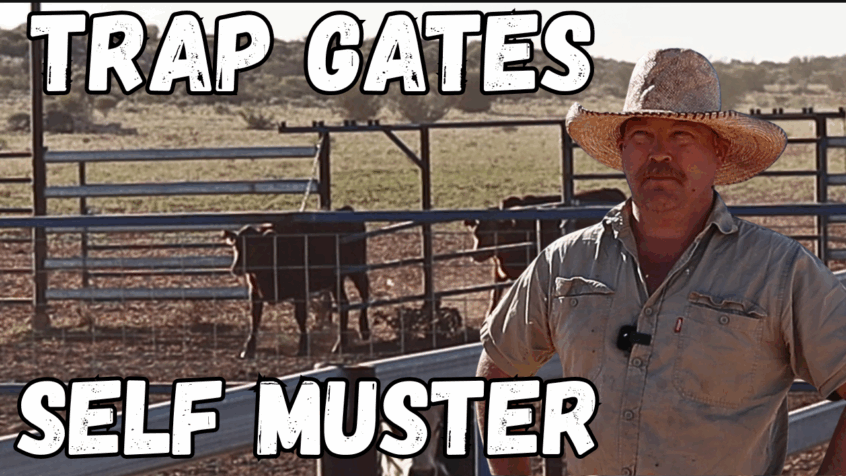Smart Mustering in the Outback: How Self-Trapping Yards Are Changing the Game

Cattle mustering in Australia’s rangelands has long been synonymous with helicopters, motorbikes, and long, dusty days. But at Idracowra Station, just south of Alice Springs, pastoralist Angus McKay is doing things differently—and it’s working.
In our latest video on the Farm Learning YouTube Channel, I visit Angus to see firsthand how self-trapping cattle yards are dramatically reducing labour, stress, and cost in remote mustering operations.
Water Is the Key
As Angus explains, “If you control the water, you control the cattle.” On this country, where vast distances and dry conditions make traditional mustering inefficient and expensive, every water point is fitted with a simple trap yard system.
Here’s how it works:
- Cattle walk through an “in” trap to access the water inside a yard.
- After drinking, they exit through an outward trap, forming a natural flow.
- Once familiar, animals comfortably walk through both directions without hesitation.
- When it’s time to muster, the outward trap is simply closed—and the cattle stay put.
It’s deceptively simple, but it’s incredibly effective.
Training Makes the Difference
Like any good system, success relies on conditioning. Angus opens the traps wide initially to build animal confidence, then gradually narrows them as the mob becomes accustomed to the yard. Eventually, the yard becomes just another part of their daily routine.
“Two or three nights,” Angus says, “and we’ve got 90 to 95% of the cattle in—no stress, no chase.”
By placing hay and water inside the yard, the animals are content, calm, and in position—ready for low-stress handling or movement to larger holding areas.
Less Stress, Better Outcomes
Unstressed cattle are not only easier to manage—they also perform better. This kind of low-stress stock handling reduces injury, maintains condition, and improves animal welfare outcomes.
For remote stations managing thousands of head across tough country, these trap yards are a mustering game-changer.
Even better, most yards have adjacent holding paddocks—simple, half-mile squares with shade and feed—where trapped animals can rest until mustering is finalised. These holding areas are empty 99% of the time but provide the flexibility to handle cattle humanely and efficiently when needed.
A Smarter Way Forward
This isn’t a high-tech system. It’s about working with the landscape and the natural habits of cattle, not against them. It’s regenerative thinking applied to animal handling: reduce inputs, reduce stress, and design systems that do the work for you.
📽️ Want to see the trap yard in action?
👉 Watch the full demonstration here on YouTube.
Learn More Every Week
If you’re looking for more practical, boots-on-the-ground solutions for farming in tough Australian conditions, subscribe to Farm Learning with Tim Thompson for weekly videos. We explore tools, systems, and ideas that make life on the land better—for people, animals, and the environment.
📩 Or sign up to the newsletter to get the latest updates, videos, and articles straight to your inbox.
#LowStressStockHandling #SelfTrappingYards #CattleMustering #RemoteStationLife #FarmLearning